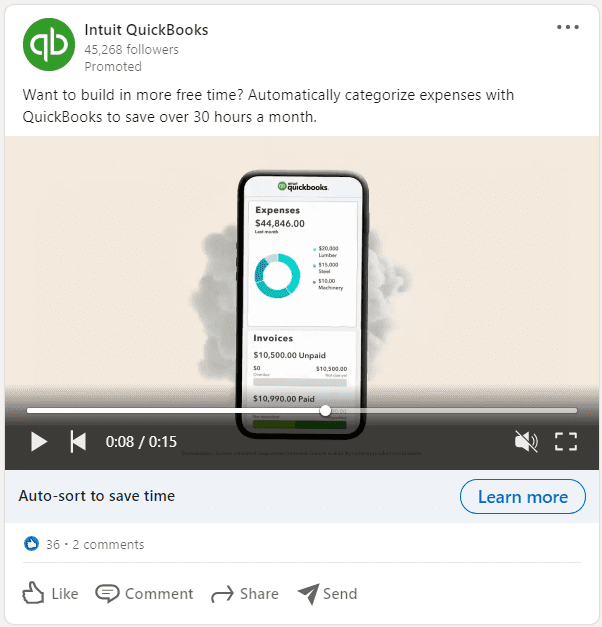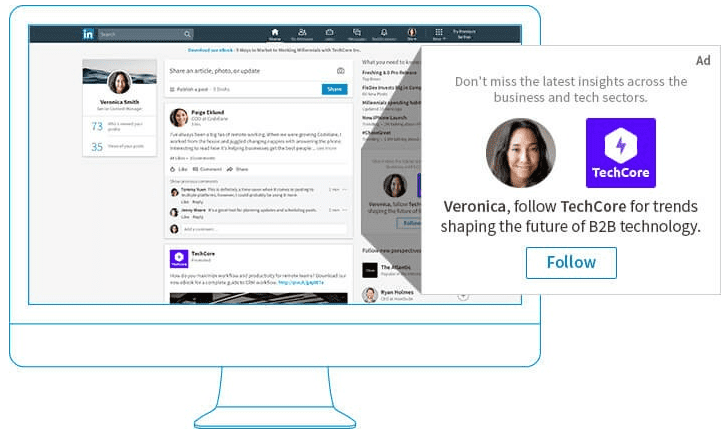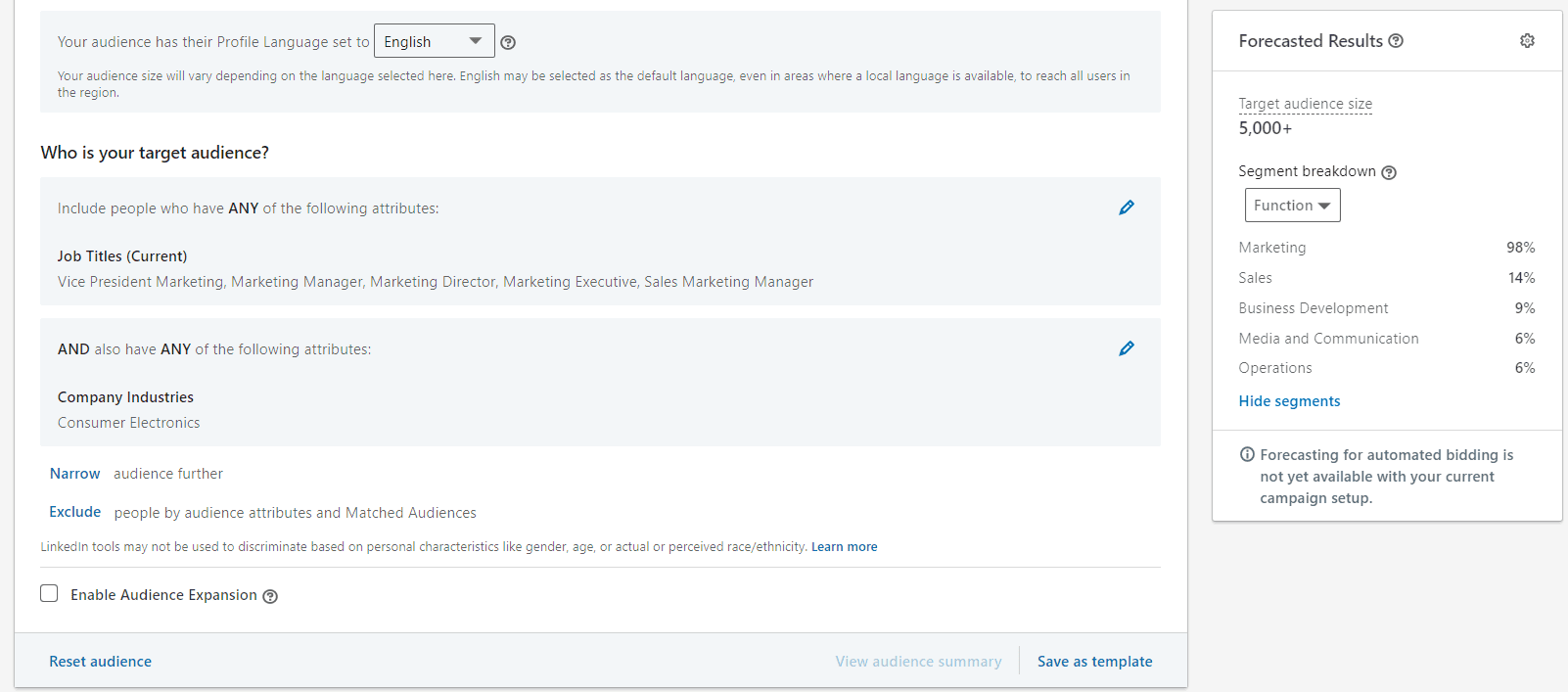LinkedIn Ads launched its self-serve ad platform back in 2013, yes it has been 8-years! Starting with “sponsored updates” LinkedIn has gradually added many more ad types and other features over the years.
Indeed, LinkedIn now offers the core ad platform features that make it viable for many advertisers. At my agency, we run campaigns for a handful of clients. Compared to Google & Facebook, LinkedIn is still fairly expensive for lead generation purposes. But where it shines is for niche B2B markets where it can be hard to target via search or other social options (I’m talking about you Facebook). And, it’s fantastic for branding, where you can spend small and get in front of exactly the right decision-makers.
Ad Types
Their ad placements lineup now includes image, video, carousel, messaging, text, and dynamic ads. Admittedly, the ad names, groupings, and how they each work is a bit confusing, but that’s true of most ad platforms until you get the hang of things. Here’s a breakdown of the creative options.
Sponsored Content
Sponsored Content ads run in the newsfeed as either single image, video, or carousel ad units. LinkedIn considers these “native” ads along the lines of what Facebook and Google both offer in their own newsfeeds. All ad formats are based on the content you publish to your company page. You can either promote an existing sponsored update (company page post) or create the ad and post simultaneously using the ad creation tool.
These ads are good for the mid to bottom of the funnel and are usually your best bet for lead nurturing and growing your follower base.
Text Ads
Text Ads are a display format that appears across most LinkedIn pages. Ads include a 25-character headline, 75-character description, and a small (I’m being kind) 100×100 pixel image. Ads typically show in blocks of 3, often below the fold, and can be purchased via CPC or CPM options. In our experience, it is best to choose CPM to ensure more consistent ad delivery.
These relatively inexpensive ad units are all about branding as they very rarely get clicked or generate conversions.
Dynamic Ads
Similar to Text Ads, these ad units use personalization to enhance visibility and click-through rates. Advertisers can display user information such as their LinkedIn headshot, name, title, and more.
The format is available in 3 flavours, each designed with a different goal:
- follower ads – to drive more page followers
- spotlight ads – to drive more conversions
- content ads – to promote content such as white papers and ebooks (currently has to be ordered through a LinkedIn rep)
Message Ads
These ads allow you to write a long-form message that appears in users’ messaging in-box. They include a subject, formatted text, a single call-to-action button, up to 3 text links, a big-box banner, and more.
These ads are typically designed for the bottom of the funnel and can work well once you’ve established strong brand awareness with your audience. A word of warning, don’t run these as if they are “cold email” because they are not. While conceptually they are similar, you pay pennies for cold email and up to 100x as much for these. Because of the cost involved, running these at scale (playing the numbers game) won’t work. Instead, focus on page followers, remarketing lists, or audiences that have been warmed up other ways.
Conversation Ads
This format follows the recent success of other interactive messenger ads. While similar to Message Ads, these ads work more like a drip campaign on steroids. Based on the users’ response different messages containing appropriate calls to action can be sent automatically.
We don’t have any hands-on experience with these yet at my agency, but they are in our to-do list.
Job Ads & Single Job Ads
These ad types are specifically for hiring new staff, and as such I know little about them. What I do know, is they use your employee network to reach out to potential job candidates.
Tracking & Targeting
Thankfully, LinkedIn introduced their tracking pixel back in 2018. Now it’s super easy to track conversions through your own website or by using LinkedIn’s built-in lead forms. Prior to that, we had to rely on UTM tracking codes and Google Analytics to reverse engineer which ads were the best performers. There was absolutely no way to discern which audience attributes were converting. What a mess!
With respect to targeting, LinkedIn now fully supports remarketing and lookalike lists utilizing website visits or uploaded contacts. And of course, their user profile targeting options are more robust than ever with job title, function, industry, company size, education, interests, location, demographics, and more.
When looking at your advertising options in 2021, this is key. While Facebook/IG relies on 3rd party tracking data, LinkedIn targeting is mainly based on user profile information. This means you can expect stable performance after cookie-based tracking disappears.
Branding
If you’re a B2B there really aren’t too many better options for brand building. Facebook Ads is still a great performer when you have a well-defined audience of over 250K or so contacts. On LinkedIn, it’s easy to get super specific, and while you will pay a premium, you can be sure that your ad is only running to the right people.
We have clients reaching everybody of interest via content marketing for just hundreds a month.
Lead Generation
Generating leads with LinkedIn is still a big challenge. I believe there are a number of reasons for this:
a) time spent on LinkedIn compared to say Facebook or TikTok is minuscule, meaning far fewer ad impressions for LinkedIn to sell
b) there are many more feed ads (33% of the content is promoted vs. about 15% on Facebook’s feed)
c) the user interface is much “busier” than Facebook’s layout
In 2021 we’re seeing an average CPA of around 3-5x that of what we see via paid search or Facebook ads. I’ll be quick to point out that as recently as 2-years ago we were seeing numbers closer to 10-12x. This is still a big gap, but the gap seems to be closing. I suspect this is mainly due to the improved post feed design (content is more native-looking), the introduction of lookalike audiences, and likely improvements to LinkedIn’s optimization algorithm.
It’s also worth pointing out that the lead quality can often be much better on LinkedIn since your targeting is typically more precise. For example, you can avoid targeting people that are in smaller companies or those that are below VP or CXO level (decision making) positions. With Google and Facebook, there’s currently no easy way to specify these people exclusively. Of course, if you use LinkedIn lookalikes your precision goes down some too.
That’s why it’s so important to track your leads close-rate by source so that you can understand the value and not just the quantity/cost that various channels are driving.
Is Now the Right Time for LinkedIn Ads?
In a word, maybe.
There are a number of things happening with privacy matters right now. This includes the imminent Apple iOS “don’t track me” change, the in-progress elimination of 3rd party cookie tracking, ad platforms removing targeting options (ongoing), and the potential break-up of Facebook.
These changes are going to degrade the performance of most social ad platforms. As such, LinkedIn is going to be a more attractive option for B2Bs.
Clearly, there are two scenarios where LinkedIn makes a lot of sense right now. First, if you want to lift your B2B brand, there’s practically no better place to be. Second, lead-gen advertisers in small niche markets can do very well on LinkedIn compared to other options. For larger markets, the CPA is still pretty high on LinkedIn… I’d recommend watching and waiting a little longer.
Did you know that Ten Thousand Foot View now offers LinkedIn Ads management services? Well, we do! Get in touch for a free consult today.



